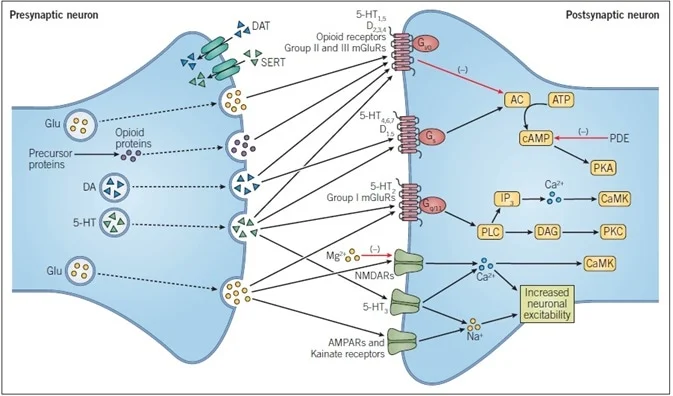Neurotoxicity refers to ‘any form of substance-induced dysfunction of the nervous system’. This broad definition already implies that neurotoxicity can be studied in many different ways, including (neuro)epidemiology, neurology, neuropathology, neurobehavior, neurophysiology and neurochemistry. The research at the Neurotoxicology Research Group focuses on cellular neurophysiology and neurochemistry.
Proper neurotransmission requires efficient and regulated communication between pre- and post-synaptic cells. The presynaptic cell synthesises its signalling molecules (neurotransmitters), which are stored in (synaptic) vesicles. Once filled, these vesicles migrate to the cell membrane where they dock and become primed for fusion with the cell membrane. Vesicle fusion should only occur upon activation of the presynaptic neuron by e.g., an action potential or by (excitatory) input from other neurons. Activation of the presynaptic neurons rapidly and transiently increases the intracellular calcium concentration, which in turn triggers vesicle fusion and subsequent release of neurotransmitters into the extracellular space (exocytosis). The released neurotransmitters will activate specific neurotransmitter receptors on the cell membrane of neighbouring postsynaptic neuron, thereby completing the signal transduction from pre- to postsynaptic neuron (Westerink, 2006).
In short, neurotransmission and neuronal (network) activity thus require proper calcium homeostasis and neurotransmitter release from the presynaptic neuron and adequate activation of neurotransmitter receptors on the postsynaptic neuron. The studies at the Neurotoxicology Research Group therefore rely strongly on measurements of the intracellular calcium concentration, the amount of released neurotransmitters, receptor-mediated ion currents and extracellular recordings of neuronal (network) activity as well as oxidative stress and cell viability.






